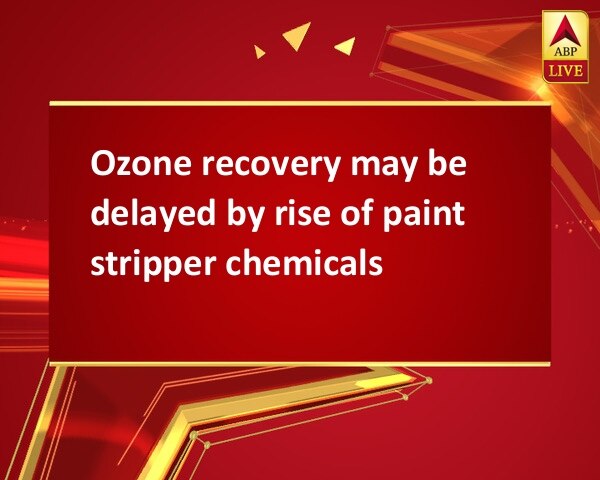
Ozone recovery may be delayed by rise of paint stripper chemicals

Washington D.C. [USA], June 28 (ANI): The restoration of the globe's protective ozone shield may be delayed by three decades if fast-rising emissions of a chemical used in paint strippers and pharmaceuticals is not restricted, warns a study.
Researchers have warned that due to the recent increase in an unregulated ozone-depleting substance in the environment, the recovery of Antarctic ozone levels can be delayed by five to 30 years, depending on emission scenarios.
The findings suggest that a previously ignored chemical called dichloromethane may be contributing to ozone depletion and should be looked at to improve future ozone predictions.
The Antarctic 'ozone hole' is expected to fully recover sometime between 2046 and 2057.
The study's lead author Dr Ryan Hossaini from Lancaster University in UK said that Dichloromethane is a man-made ozone-depleting chemical that has a range of industrial applications.
"Our results show that continued sustained growth in its concentration could substantially delay recovery of the ozone layer, offsetting some of the future benefits of the Montreal Protocol," Hossaini added.
The team examined the sensitivity of future stratospheric chlorine and ozone levels to sustained dichloromethane growth.
Measurements of dichloromethane in the atmosphere over the past two decades, provided by scientists from the National Oceanic and Atmospheric Administration (NOAA) in the United States, were also analysed.
Their projections showed that continued dichloromethane increases at the average trend observed from 2004-2014 would delay ozone recovery over Antarctica by 30 years.
If dichloromethane concentrations stay at current levels, then the delay in recovery would be only five years.
Study co-author Martyn Chipperfield from the University of Leeds said, "At present, the long-term recovery of the Ozone Layer from the effects of CFCs is still on track, but the presence of increasing dichloromethane will add some uncertainty to our future predictions of ozone and climate."
The ozone layer shields Earth's surface from certain wavelengths of harmful solar ultraviolet (UV) radiation that would otherwise be detrimental to human, animal and plant health. Ozone also absorbs terrestrial infrared (IR) radiation and changes in its abundance can influence climate.
The study appears in the journal Nature Communications. (ANI)
This story has not been edited. It has been published as provided by ANI
Top Headline
Trending News

and tablets



























